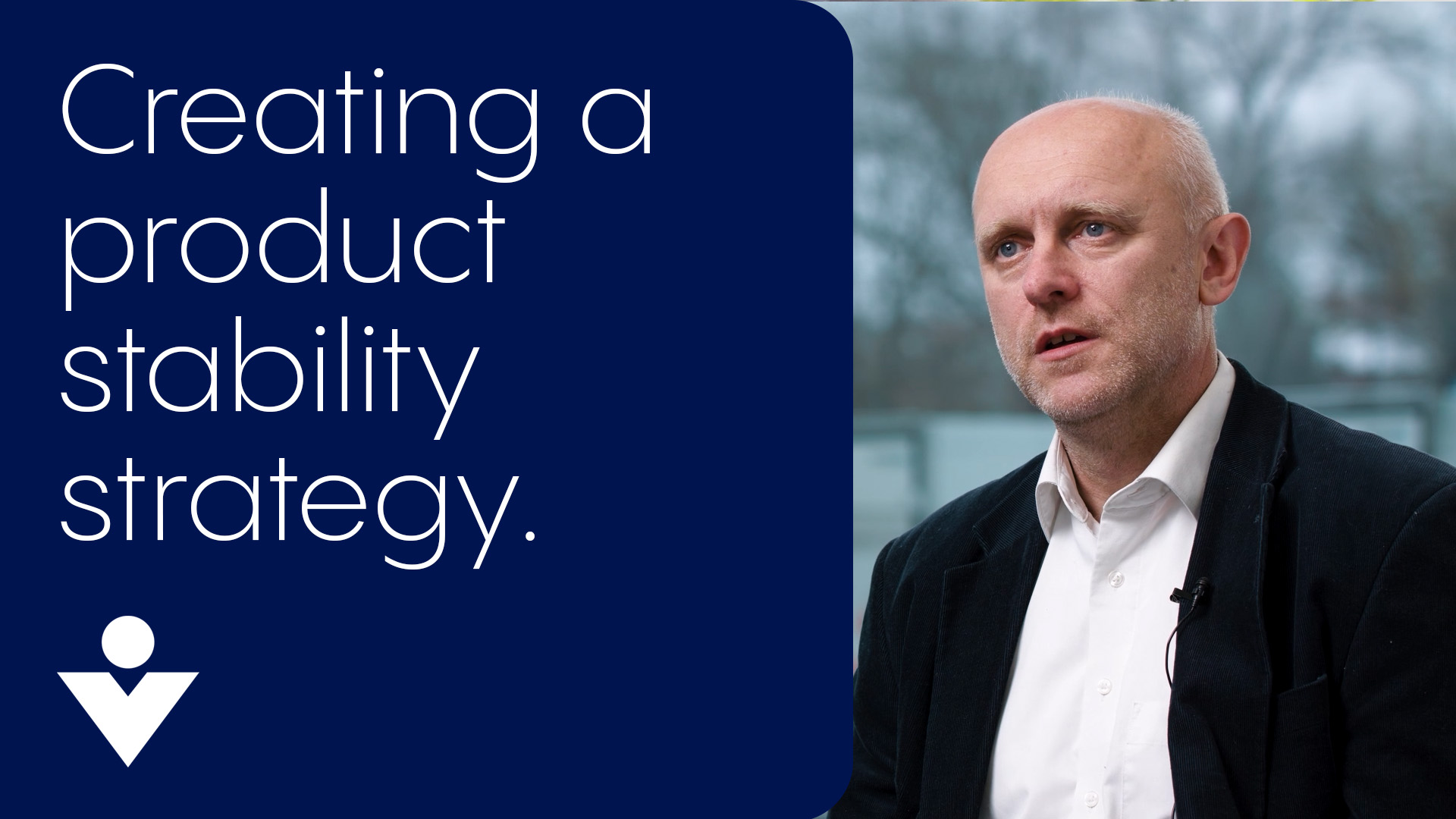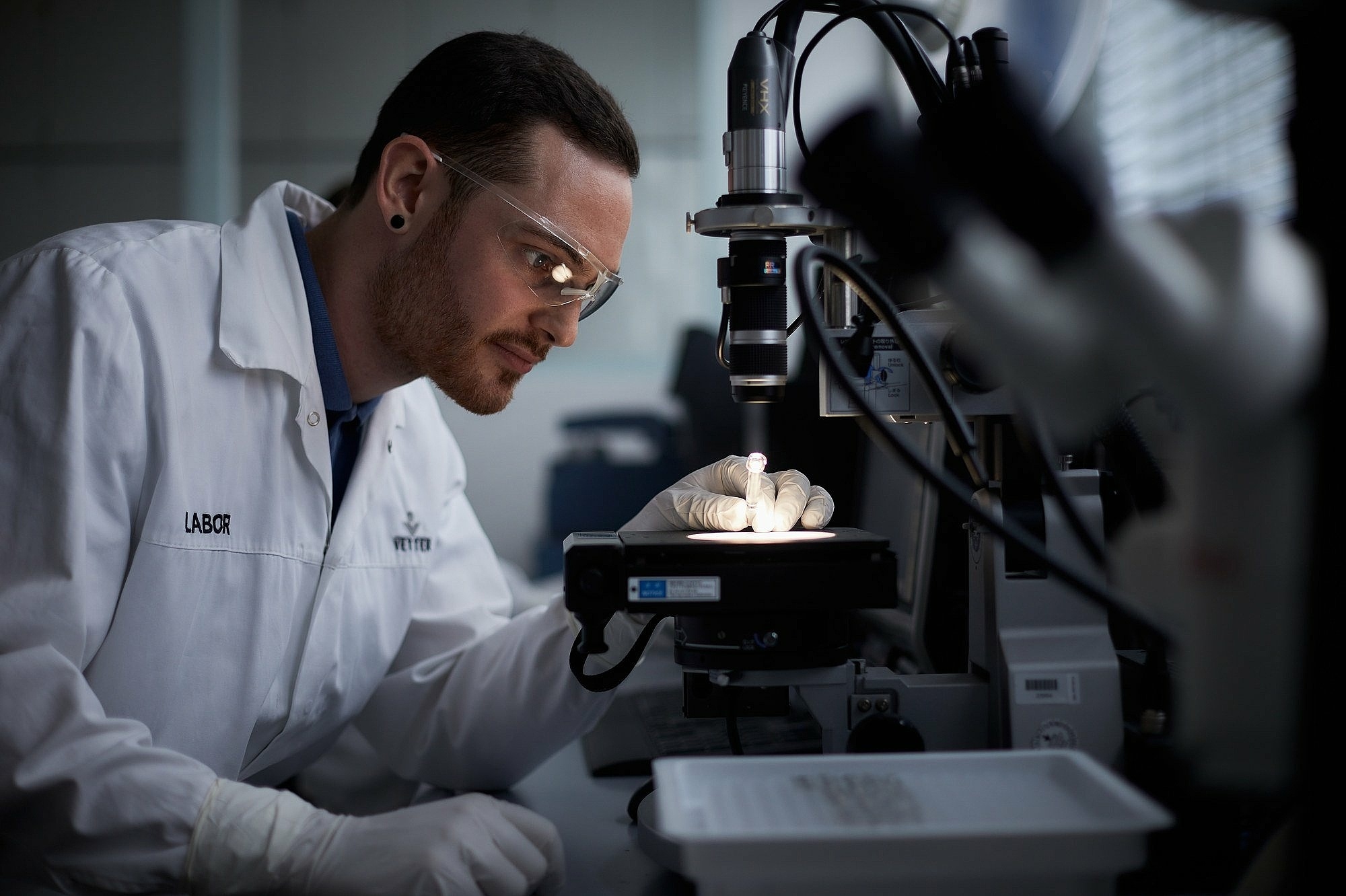
Before you take your molecule to the clinic, you need a long-term plan to protect your product’s stability. Dr. David Brett, an expert on sterile injectable products, explains the three primary stabilization options for parenteral medications, and how to pick the right one for your product.

Dr. David Brett, Former Product and Service Manager at Vetter
As a seasoned expert with extensive experience in pharma and biotech, Dr. Brett has helped a wide range companies navigate the transition from preclinical development to in-human trials. He has deep technical and scientific expertise in the development of complex, sensitive molecules.
3 strategic approaches to drug product stability
As your team transitions to clinical development of your injectable medication, a critical question will be waiting: how long will your molecule remain stable after filling? The answer is vital to your success at several key milestones: filling your clinical trial material, your IND, and also your product’s future regulatory submissions and commercial market profile.
You may already know that your product requires a stability strategy. There may be similar molecules that are already in the market that require a stability program. This applies to certain groups of products, including biologics (proteins, antibodies, peptides), lipid products, and vaccine vectors. If your product falls into one of those classes, it may be time to start considering a strategy for how to ensure your product’s stability.
In this video, Dr. David Brett talks about how to identify and develop the right stability program for your product. Dr. Brett, a senior member of the Product and Service Management team at Vetter, has extensive experience with helping pharma and biotech companies navigate the transition to clinical development. His key advice: think ahead when you make make critical decisions about how to stabilize your product. The easy answer now may not be the best answer for your product’s future.
3 options for creating a product stability program
As Dr. Brett explains, teams developing a parenteral medication with stability limits typically have three options for a stability program. Each has its advantages a disadvantages, which its important for you to consider as you evaluate which approach is right for your product.
1. Reformulation: Looking for a new formulation that’s stable at room temperature. While this may be the gold standard in terms of product profile, it can also be a time-consuming process with no guarantee of a successful outcome.
2. Freezing: Stabilizing your product in frozen form. If this approach is appopriate for your product, it can be a quick, cost-efficient approach. Not all products can withstand repeated freeze-thaw cycles, however, while frozen products also require logistically demanding cold chains that may not be available in all markets.
3. Lyophilization: Freeze-drying your product for long-term stability. Lyophilized medications typically have extensive shelf-lives at room temperature, which can add significant value to your product. But developing a lyophilization cycle and embedding it in your manufacturing processes can also require significant upfront investment – both time and capital.
As Dr. Brett notes, some companies may try all three options, parallel-processing, to see which one is optimal for their product. However you approach this step, it’s important to start early and think ahead – not just about the most effective approach for your product, but also about how it will fit into your future development and distribution plans.
You’ll want to consider:
• Your target markets & users: Will your product be widely distributed, and need extensive logistic support? Or will it be a niche application that can be easily addressed clinic by clinic?
• Your distribution channels: Will our product be distributed in developed countries with highly resourced healthcare systems? Or will it be used in more complex environments?
• Your licensing strategy: Planning to out-license your product? The product stabillity strategy you put in place now can potentially have a big impact on the value of your product and enhance its deal potential.
“Your approach to stabilizing your product can have a big impact on its market profile,” Dr. Brett adds. The strategy you use to stabilize that product is more than a step down your development pathway; it can also help put you on a path to launching with the strongest possible potential in your target markets.

Explore more in-depth insights on our video hub
Bookmark this page and watch your inbox for more insights on a range of injectable drug manufacturing topics – from aseptic sill-finish, to packaging, to transitioning your product a patient-friendly delivery device.






